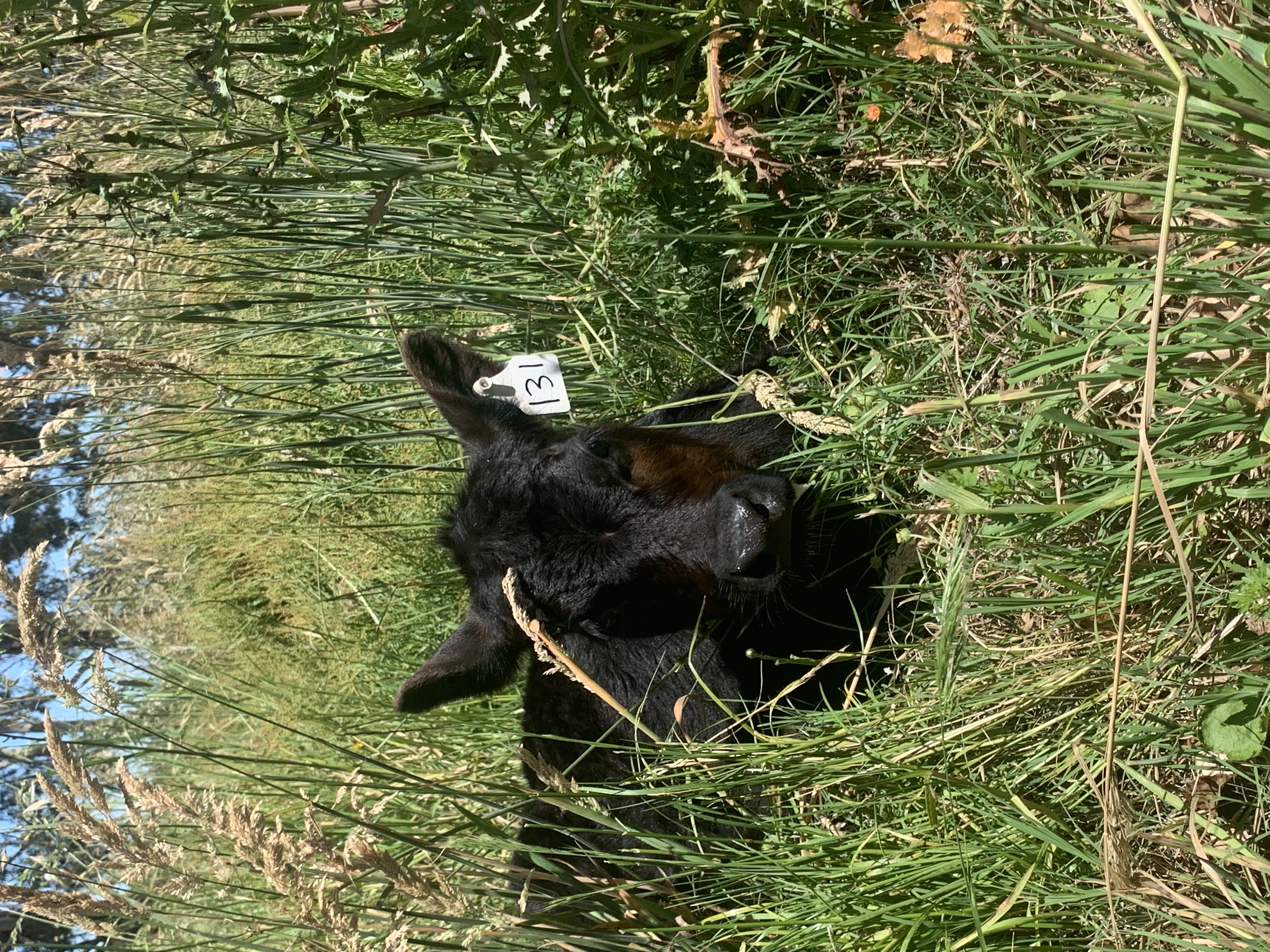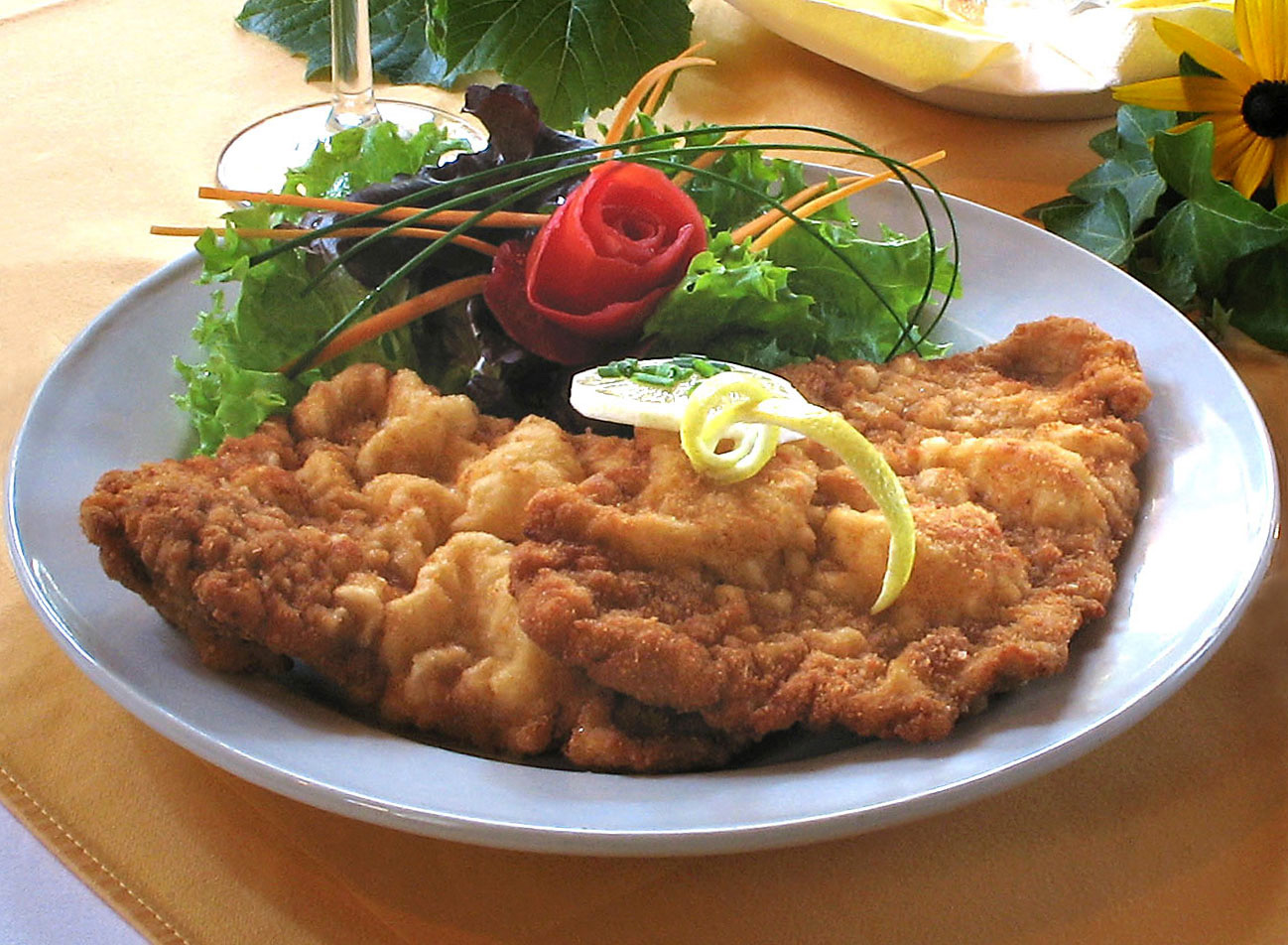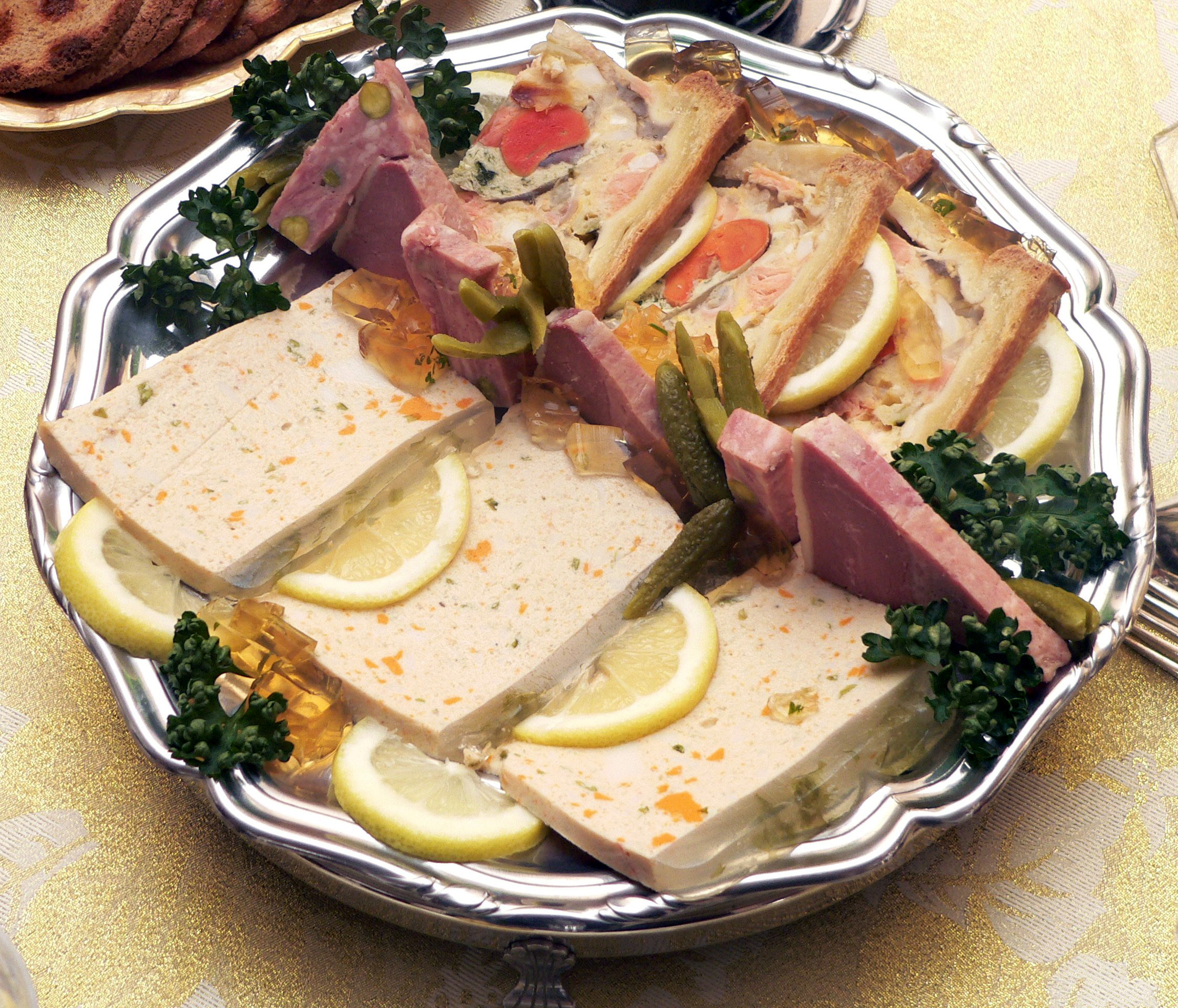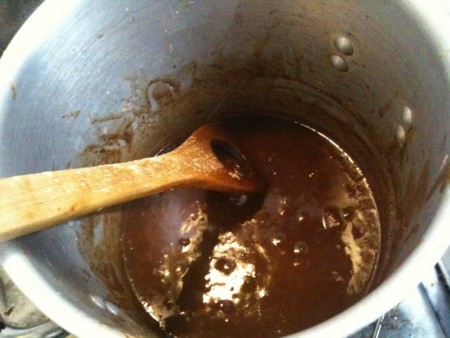|
Veal
Veal is the meat of Calf (animal), calves, in contrast to the beef from older cattle. Veal can be produced from a calf of either sex and any List of cattle breeds, breed; however, most veal comes from young male calves of Dairy cattle, dairy breeds which are not used for breeding. Generally, veal is more expensive by mass than beef from older cattle. Veal production is a way to add value to dairy bull calves and to utilize whey solids, a byproduct from the manufacturing of cheese. Definitions and types There are several types of veal, and terminology varies by country. Similar terms are used in the US, including calf, bob, intermediate, milk-fed, and special-fed. Culinary uses In Italian cuisine, Italian, French cuisine, French and other Mediterranean cuisines, veal is often in the form of cutlets, such as the Italian ''cotoletta'' or the famous Austrian dish Wiener schnitzel. Some classic French veal dishes include fried ''escalopes'', fried veal ''grenadi ... [...More Info...] [...Related Items...] OR: [Wikipedia] [Google] [Baidu] [Amazon] |
Blanquette De Veau
Blanquette de veau () is a French cuisine, French veal stew. In the classic version of the dish the meat is simmered in a white stock and served in a sauce velouté enriched with cream and egg. It is among the most popular meat dishes in France. Definition ''The Oxford Companion to Food'' describes "blanquette" as "a French and to some extent international culinary term indicating a dish of white meat (veal, poultry, also lamb) served in a white sauce". In ''Larousse Gastronomique'', Prosper Montagné's definition is "the French term for a ragout of white meat (veal, lamb or poultry) cooked in a white stock or water with aromatic flavourings".Montagne, p. 125 Simone Beck, Louisette Bertholle and Julia Child in their ''Mastering the Art of French Cooking'' describe blanquette de veau, as "a much-loved stew in France … veal simmered in a lightly seasoned white stock … served in a sauce velouté made from the veal cooking stock and enriched with cream and egg yolks". In 2007 Anne ... [...More Info...] [...Related Items...] OR: [Wikipedia] [Google] [Baidu] [Amazon] |
Cotoletta
''Cotoletta'' () is an Italian form of breaded cutlet made from veal. Italy Lombardy '' Cotoletta alla milanese'' (after its place of origin, Milan) is a fried veal breaded cutlet similar to Wiener schnitzel, but cooked with the bone in. It is traditionally fried in clarified butter. Due to its shape, it is often called ''oreggia d'elefant'' in Milanese or ''orecchia d'elefante'' in Italian, meaning 'elephant's ear'. Emilia-Romagna '' Cotoletta alla bolognese'' (after its place of origin, Bologna) is similar to a ''milanese'', but melted Parmesan cheese and pieces of prosciutto are put overtop of the fried veal cutlet. Sicily ''Cotoletta alla palermitana'' (after its place of origin, Palermo) is similar to a ''milanese'', but the veal is brushed with olive oil, and then baked or grilled instead of being fried. The breadcrumb is often mixed with parsley and pecorino cheese and, unlike the ''milanese'' cutlet, the ''palermitana'' cutlet does not have eggs in its breading. ... [...More Info...] [...Related Items...] OR: [Wikipedia] [Google] [Baidu] [Amazon] |
Calf (animal)
A calf (: calves) is a young domestic cow or bull. Calves are reared to become adult cattle or are slaughtered for their meat, called veal, and their Calfskin, hide. Terminology "Calf" is the term used from birth to weaning, when it becomes known as a ''weaner'' or ''weaner calf'', though in some areas the term "calf" may be used until the animal is a wiktionary:yearling, yearling. The birth of a calf is known as ''calving''. A calf that has lost its mother is an orphan calf, also known as a ''poddy'' or ''poddy-calf'' in British. ''Bobby calves'' are young calves which are to be slaughtered for human consumption. A ''vealer'' is a calf weighing less than about which is at about eight to nine months of age. A young female calf from birth until she has had a calf of her own is called a ''heifer'' (). In the American Old West, a motherless or small, runty calf was sometimes referred to as a dodie. Early development Calves may be produced by natural means, or by artificial ... [...More Info...] [...Related Items...] OR: [Wikipedia] [Google] [Baidu] [Amazon] |
Beef
Beef is the culinary name for meat from cattle (''Bos taurus''). Beef can be prepared in various ways; Cut of beef, cuts are often used for steak, which can be cooked to varying degrees of doneness, while trimmings are often Ground beef, ground or minced, as found in most hamburgers. Beef contains protein, iron, and vitamin B12. Along with other kinds of red meat, high consumption is associated with an increased risk of colorectal cancer and coronary heart disease, especially when processed meat, processed. Beef has a high Environmental impact of meat production, environmental impact, being a primary driver of deforestation with the highest greenhouse gas emissions of any agricultural product. In prehistoric times, humans hunted aurochs and later domesticated them. Since that time, numerous beef cattle, breeds of cattle have been Selective breeding, bred specifically for the quality or quantity of their meat. Today, beef is the third most widely consumed meat in the world, aft ... [...More Info...] [...Related Items...] OR: [Wikipedia] [Google] [Baidu] [Amazon] |
Paupiette
A ''paupiette'' is a piece of meat, beaten thin, and rolled with a stuffing of vegetables, fruits, or sweetmeats. It is often featured in recipes from Normandy. It is often fried or braised, or baked in wine or stock. They are very popular in France, being sold ready-prepared in supermarkets and butchers. Paupiettes can be made with various items such as chicken, beef, lamb, fish, veal, cabbage, turkey escalopes or slices of calves' sweetbreads. A ''paupiette'' is a type of roulade and sometimes called a braciole. Paupiette may also refer to a classic French fish dish whereby a thin slice of fish (tuna, sole, whiting or even anchovy) is stuffed, rolled and secured with string before cooking in a stock. A synonym of ''paupiette'' is, in Belgium, ''oiseau sans tête''. Examples of dishes featuring paupiettes ''Paupiettes de Volaille Florentine'', where the stuffing is spinach and prosciutto and rice. ''Paupiettes of lamb à la créole'', where the stuffing is pork forcemea ... [...More Info...] [...Related Items...] OR: [Wikipedia] [Google] [Baidu] [Amazon] |
Wiener Schnitzel
Wiener schnitzel ( ; , 'Viennese cutlet'), sometimes spelled Wienerschnitzel, is a type of schnitzel made of a thin, Bread crumbs#Breading, breaded, pan-fried veal cutlet. It is one of the best known specialities of Viennese cuisine, and one of the national dishes of Austria. History and etymology The designation first appeared in the 19th century, with the first known mention in a cookbook from 1831. In the popular southern German cookbook by Katharina Prato, it was mentioned as (roughly, "breaded veal cutlets"). According to a tale, Field Marshal Joseph Radetzky von Radetz brought the recipe from Italy to Vienna in 1857. In 2007, linguist Heinz-Dieter Pohl could prove that this story had been invented. According to Pohl, the dish is first mentioned in connection with Radetzky in 1869 in an Italian gastronomy book (''Guida gastronomica d'Italia''), which was published in German in 1871 as ''Italien tafelt'', and it is claimed that the story instead concerned the ''cotole ... [...More Info...] [...Related Items...] OR: [Wikipedia] [Google] [Baidu] [Amazon] |
Holstein Cow With One-day Calf 01
Holstein (; ; ; ; ) is the region between the rivers Elbe and Eider. It is the southern half of Schleswig-Holstein, the northernmost state of Germany. Holstein once existed as the German County of Holstein (; 811–1474), the later Duchy of Holstein (; 1474–1866), and was the northernmost territory of the Holy Roman Empire. The history of Holstein is closely intertwined with the history of the Danish Duchy of Schleswig (). The capital of Holstein is Kiel. Holstein's name comes from the Holcetae, a Saxon tribe mentioned by Adam of Bremen as living on the north bank of the Elbe, to the west of Hamburg. The name means "dwellers in the wood" or "hill-sitters" (Northern Low Saxon: ; ). History Origins After the Migration Period of the Early Middle Ages, Holstein was adjacent to the Obotrites on the coast of the Baltic Sea and the land of the Danes in Jutland. With the conquest of Old Saxony by Charlemagne ''circa'' 800, he granted the land north of the Eider River (Schleswig ... [...More Info...] [...Related Items...] OR: [Wikipedia] [Google] [Baidu] [Amazon] |
Italian Cuisine
Italian cuisine is a Mediterranean cuisine#CITEREFDavid1988, David 1988, Introduction, pp. 101–103 consisting of the ingredients, recipes, and cooking techniques developed in Italy since Ancient Roman cuisine, Roman times, and later spread around the world together with waves of Italian diaspora. Significant changes Columbian exchange, occurred with the colonization of the Americas and the consequent introduction of potatoes, tomatoes, capsicums, and maize, as well as sugar beet—the latter introduced in quantity in the 18th century. It is one of the best-known and most widely appreciated Gastronomy, gastronomies worldwide. Italian cuisine includes deeply rooted traditions common throughout the country, as well as all the diverse Regional cuisine, regional gastronomies, different from each other, especially between Northern Italy, the north, Central Italy, the centre, and Southern Italy, the south of Italy, which are in continuous exchange. Many dishes that were once region ... [...More Info...] [...Related Items...] OR: [Wikipedia] [Google] [Baidu] [Amazon] |
Offal
Offal (), also called variety meats, pluck or organ meats, is the internal organ (anatomy), organs of a butchered animal. Offal may also refer to the by-products of Milling (grinding), milled grains, such as corn or wheat. Some cultures strongly consider offal consumption to be taboo, while others use it as part of their everyday food, such as lunch meats, or, in many instances, as Delicacy, delicacies. Certain offal dishes—including ''foie gras'' and ''pâté''—are often regarded as gourmet food in the culinary arts. Others remain part of traditional regional cuisine and are consumed especially during holidays; some examples are sweetbread, Jewish chopped liver, Scottish haggis, U.S. chitterlings, and Mexican Menudo (soup), menudo. On the other hand, intestines are traditionally used as casing for sausages. Depending on the context, ''offal'' may refer only to those parts of an animal carcass discarded after butchering or skinning; offal not used directly for human or anim ... [...More Info...] [...Related Items...] OR: [Wikipedia] [Google] [Baidu] [Amazon] |
Rennet
Rennet () is a complex set of enzymes produced in the stomachs of ruminant mammals. Chymosin, its key component, is a protease, protease enzyme that curdling, curdles the casein in milk. In addition to chymosin, rennet contains other enzymes, such as pepsin and a lipase. Rennet has traditionally been used to separate milk into solid curds and liquid whey, used in the production of cheeses. Rennet from calves has become less common for this use, to the point that less than 5% of cheese in the United States is made using animal rennet today. Most cheese is now made using chymosin derived from bacterial sources. Molecular action of rennet enzymes One of the main actions of rennet is its protease chymosin cleaving the kappa casein chain. Casein is the main protein of Milk#Proteins, milk. Cleavage removes the slightly negatively charged glycomacropeptide (GMP) from the surface of the casein micelle. Because negative charges repel other negative charges, the GMP prevents casein micell ... [...More Info...] [...Related Items...] OR: [Wikipedia] [Google] [Baidu] [Amazon] |
Demi-glace
Demi-glace (, 'half glaze') is a rich brown sauce in French cuisine used by itself or as a base for other sauces. The term comes from the French word ''glace'', which, when used in reference to a sauce, means "icing" or "glaze." It is traditionally made by combining one part espagnole sauce and one part brown stock. The sauce is then reduced by half, strained of any leftover impurities, and finished with a sherry wine. Common variants of demi-glace use a 1:1 mixture of beef or chicken stock to sauce espagnole; these are referred to as "beef demi-glace" (''demi-glace au bœuf'') or "chicken demi-glace" (''demi-glace au poulet''). Preparation Due to the considerable effort involved in making the traditional demi-glace, chefs commonly substitute a simple ''jus lié'' of veal stock or to create a simulated version, which the American cookbook author Julia Child referred to as a "semi-demi-glace" (i.e. sans espagnole sauce). See also * Gypsy sauce * List of sauces * Mea ... [...More Info...] [...Related Items...] OR: [Wikipedia] [Google] [Baidu] [Amazon] |
Stock (food)
Stock, sometimes called bone broth, is a savory cooking liquid that forms the basis of many dishes particularly soups, stews, and sauces. Making stock involves simmering animal bones, meat, seafood, or vegetables in water or wine, often for an extended period. Mirepoix or other aromatics may be added for more flavor. Preparation Traditionally, stock is made by simmering various ingredients in water. A newer approach is to use a pressure cooker. The ingredients may include some or all of the following: Bones: Beef and chicken bones are most commonly used; fish is also common. The flavor of the stock comes from the bone marrow, cartilage and other connective tissue. Connective tissue contains collagen, which is converted into gelatin that thickens the liquid. Stock made from bones needs to be simmered for long periods; pressure cooking methods shorten the time necessary to extract the flavor from the bones. Meat: Cooked meat still attached to bones is also used as an ... [...More Info...] [...Related Items...] OR: [Wikipedia] [Google] [Baidu] [Amazon] |








